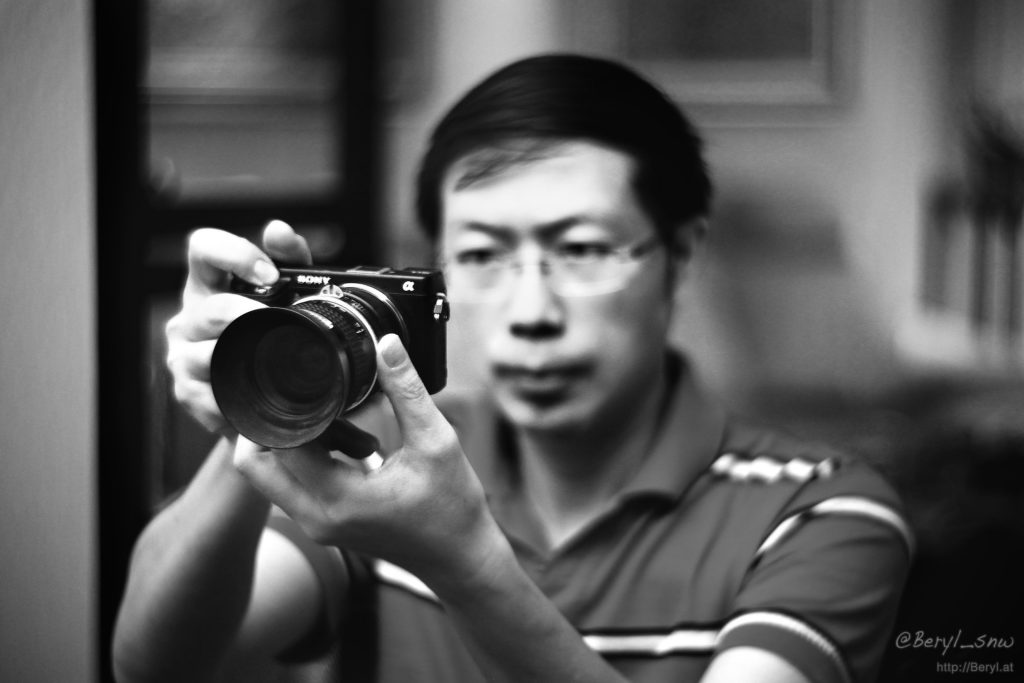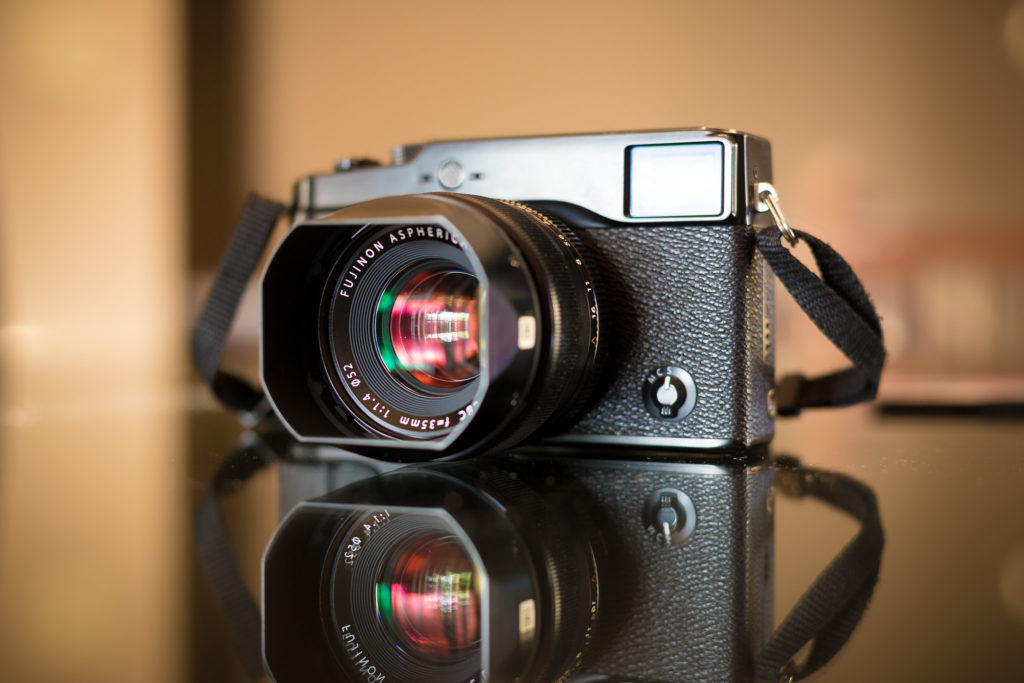Love them or hate them mirrorless cameras are here to stay. It's a pretty safe bet that in the next few years, more than one of you will be moving to a mirrorless system. Of course there are pros and cons to any camera system and both are well documented. However like going from Windows to Mac or Ford to Nissan there are going to be some things that you find very strange. Today, for the benefit of those who are about to pull the trigger on a mirrorless camera, we are going to highlight some of the things that might confuse you.
The EVIL Viewfinder
Most people will come to a mirrorless camera having owned a DLSR. That of course means, a real live, analogue view reflected from a mirror and into a pentaprism. Mirrorless dispenses with the optical system and replaces it with an electronic viewfinder. One of the things you are going to notice first about your viewfinder is that it still has a shutter black out when you take an image. This is not because a mirror is pulling out of the way but because the sensor that records your image is the same one that provides the live view to your viewfinder.

EVIL viewfinders take some getting use to.
Another thing you will notice is that it may start to lag in low light. What this means is that the image in the viewfinder will lag behind the actual view. It's most noticeable if you are panning the camera. Electronic viewfinders however have become much more advanced in recent years to the point they are close to rivalling DSLRs' optical finders.
Electronic viewfinders can work in two ways. One is where, if the light levels start to drop, the viewfinder will compensate and maintain a bright view for you to work with. Alternatively you can allow the viewfinder to maintain a similar light level to the ambient light. You can of course project exposure aids such as live histograms onto your viewfinder, very useful in rapidly changing light conditions.
What The Size Means in Practice
Even the biggest full frame mirrorless cameras are significantly smaller than their DSLR counterparts. The lenses are also smaller. It comes as a bit of a culture shock when you first pick a mirrorless camera up, you might think that it feels like a toy. Don’t let its diminutive dimensions fool you though. In your hands is a machine every bit as capable as your DLSR, able to produce stunning images and footage.
Because the large pentaprism is not needed, controls on mirrorless cameras are often well thought out and ergonomically positioned. If you err towards large clumsy hands you might want to check out different models to see if any suit but for the most part, you will be pleasantly surprised at how well they handle.

Mirrorless cameras are small but still ergonomic.
Battery Life Blues
The elephant in the room is of course battery life and you will find that it could be significantly less than your DSLR. The reasons for this are twofold. Firstly because the camera itself is smaller there is less room for a large capacity battery. Secondly, the use of the electronic viewfinder or LCD screen to compose images obviously takes a toll on battery life.
Whilst this does mean you need to pack a few extra batteries, these on the whole, are cheaper than their DSLR counterparts. I feel that the battery issue is often overdone. Unless you are shooting burst mode all the time it takes but a few seconds to change a battery. If you are contemplating a mirrorless system I would not let this issue be a priority in your decision making.

Battery life is an issue, but for most not a vital one.
User Interface
If you are moving over from a DSLR system, you will be used to the menu interfaces of Nikon, Canon or Pentax. Chances are you have been with that system for a while and different models within that system will have fairly similar user interfaces. The big players in the mirrorless world however are Fuji, Sony, Panasonic and Olympus. Whatever one you choose it will almost certainly be somewhat different to what you are used to. However, camera companies spend a lot of time and money of designing their menus and user interfaces to make them easy to use. It won’t be difficult to learn, just different, and will require you to re-align your workflow a little. A few weeks shooting and the interface will soon become second nature.

Interfaces are not better or worse, just different.
Mirrorless systems have their detractors and most of the things they quote are listed above. However there few notable issues are largely negated by their many positives. If you are contemplating a switch, take in to consideration the items we have detailed above. Most of these things are not better or worse than DSLRs, just different. If you can overcome those differences you will fall in love with mirrorless.





7 Comments
One of the biggest issues for me is the lack of direct control buttons. Pro DSLR have dedicated buttons for key features. The mirrorless cameras I have seen require you to wade through menus.
Of course there is also the issue of world class lenses. I have a collection of Nikkor lenses that I’ll have to wait for non to develop an adequate pro mirrorless camera.
Due to vast number of Canon/Nikon users there is a are large market of 2nd hand lenses at decent prices. Not so for the M43 user.
I find the selection at KEH to be quite good for my Olympus bodies.
I won’t switch, but will add a mirrorless to my bag at some point. It will be a while before they can replace a pro level DSLR but I like the lightness and space saving aspects of mirrorless…….Waiting.
I just bought an Olympus OMD 10 to take overseas. After years of a love/hate relationship with my Canon 5D, what a revelation to have this little beauty in my handbag, or hanging comfortably around my neck. Yes it has a tiny sensor by comparison but I did some printing when I came back and I honestly cannot see a drop in quality at A4 size. I have yet to try bigger output sizes but for everyday use this will be my go to camera. One rookie mistake though. I opted for the 45mm f1.8 prime over the stock zoom offered with the camera and this had many limitations as a traveller photographing a range of subjects. Exquisite for portraits but soon I will be back to the shops for a wider angle zoom. It is a wonderfully discreet camera too for street photography. The battery life was reasonably good and I could get through the day and night on one charge as I’m pretty fastidious about turning the camera off when not in use. It also has a great range of scene modes including portrait/landscape and candlelight. Of course I could work this out myself but on holidays it’s nice not to have to think and just focus on the capture. It also withstood a drop onto cobblestones from a meter when my canvas bag fell off a table and I heard that painful smash tinkle which turned out to be my keys only. (Poor little thing is still naked until I have time to get a proper bag). So sadly, 5D is now in partial retirement and only comes out for work while I’m taking my new, younger, prettier girlfriend out for the fun stuff.
If you live in a colder climate or go to a colder climate the battery life becomes a bigger problem.
I understand adapters are available to build a “crossbreed” system. Putting a Canon lenses on an Olympus body or visa versa is possible.
Canon also makes an adapter to connect full frame lenses to the mirrorless bodies, although it has taken a long time for them to catch up to the rest of the crowded field. The M6 looks promising…